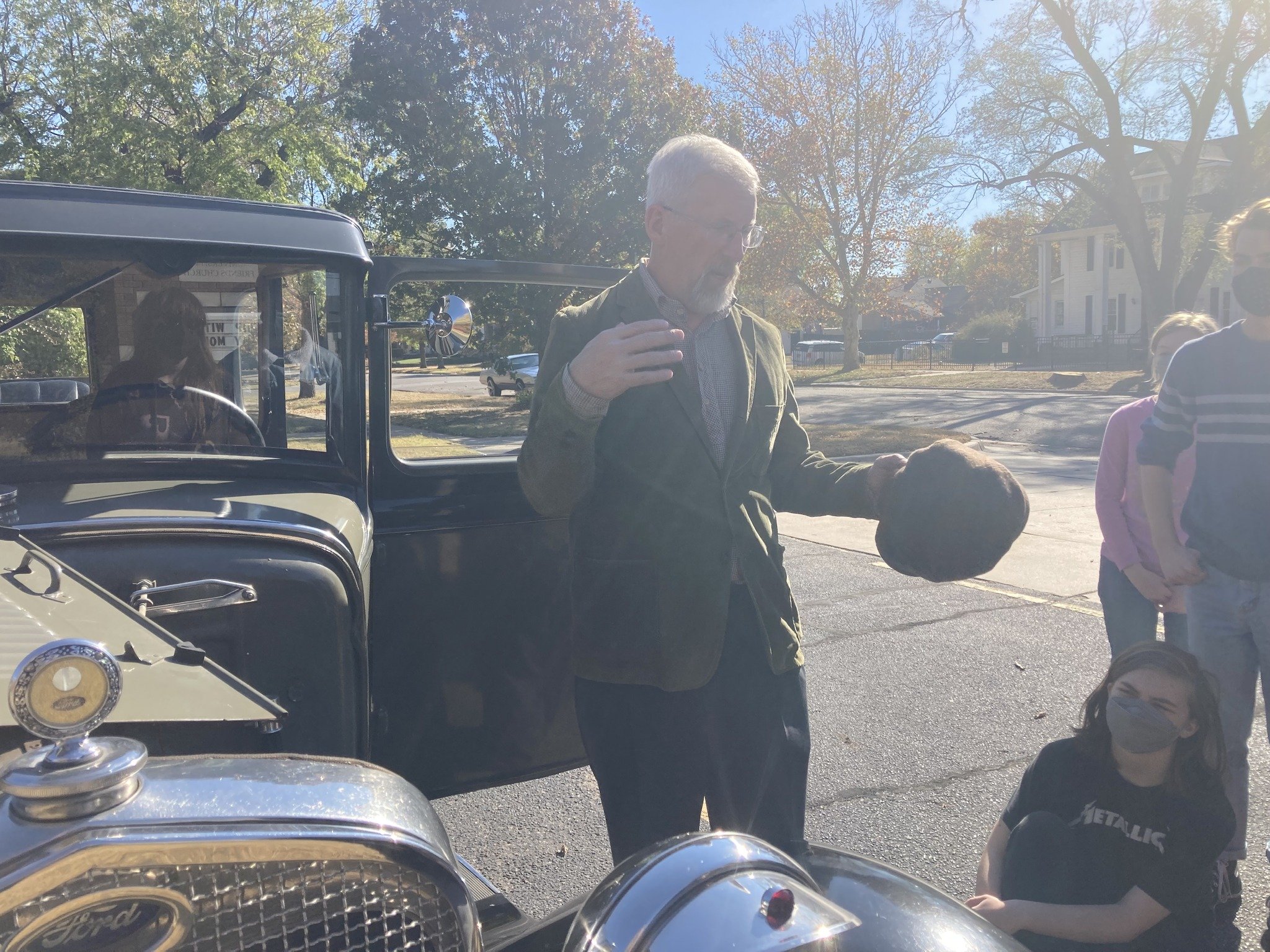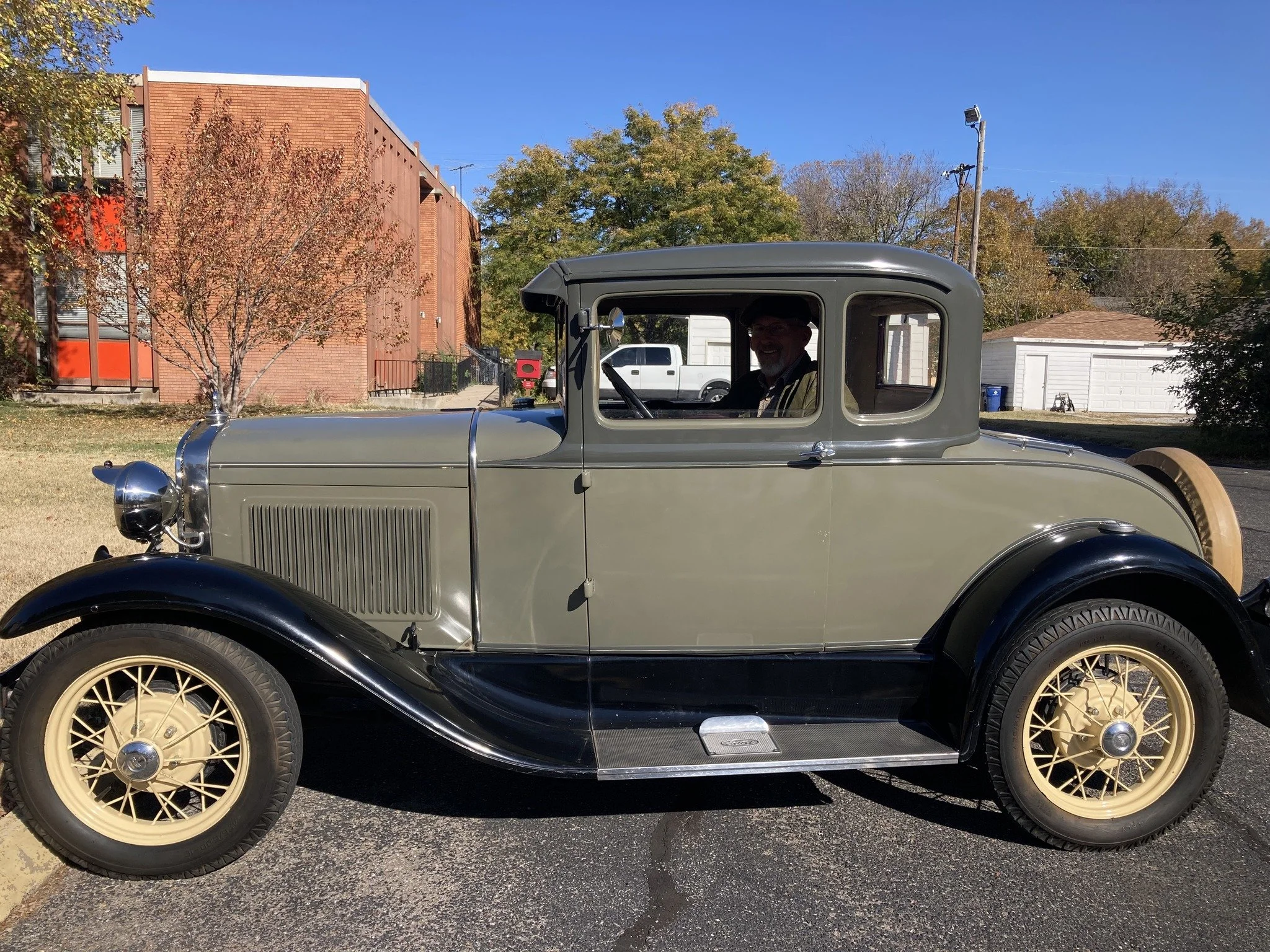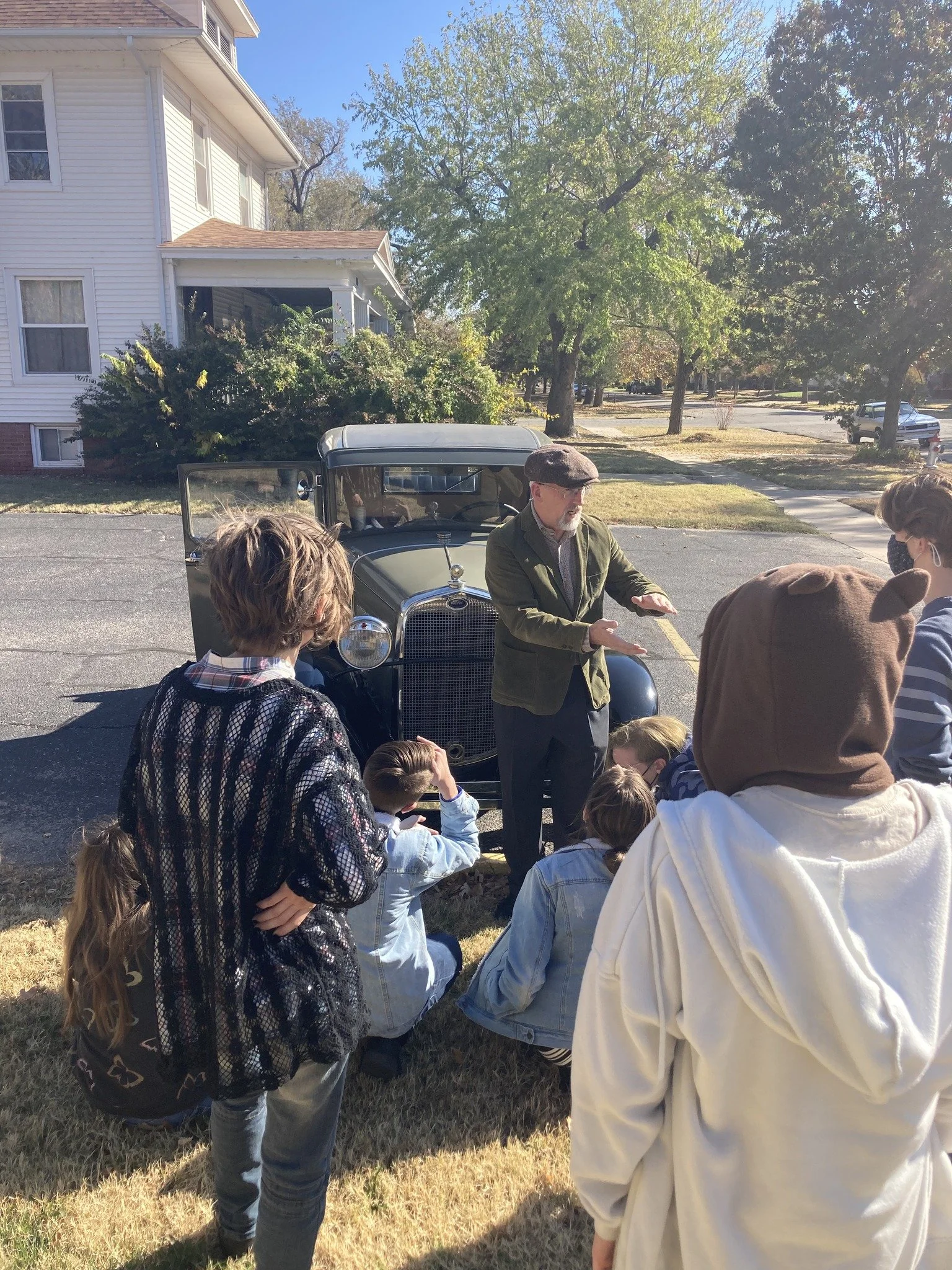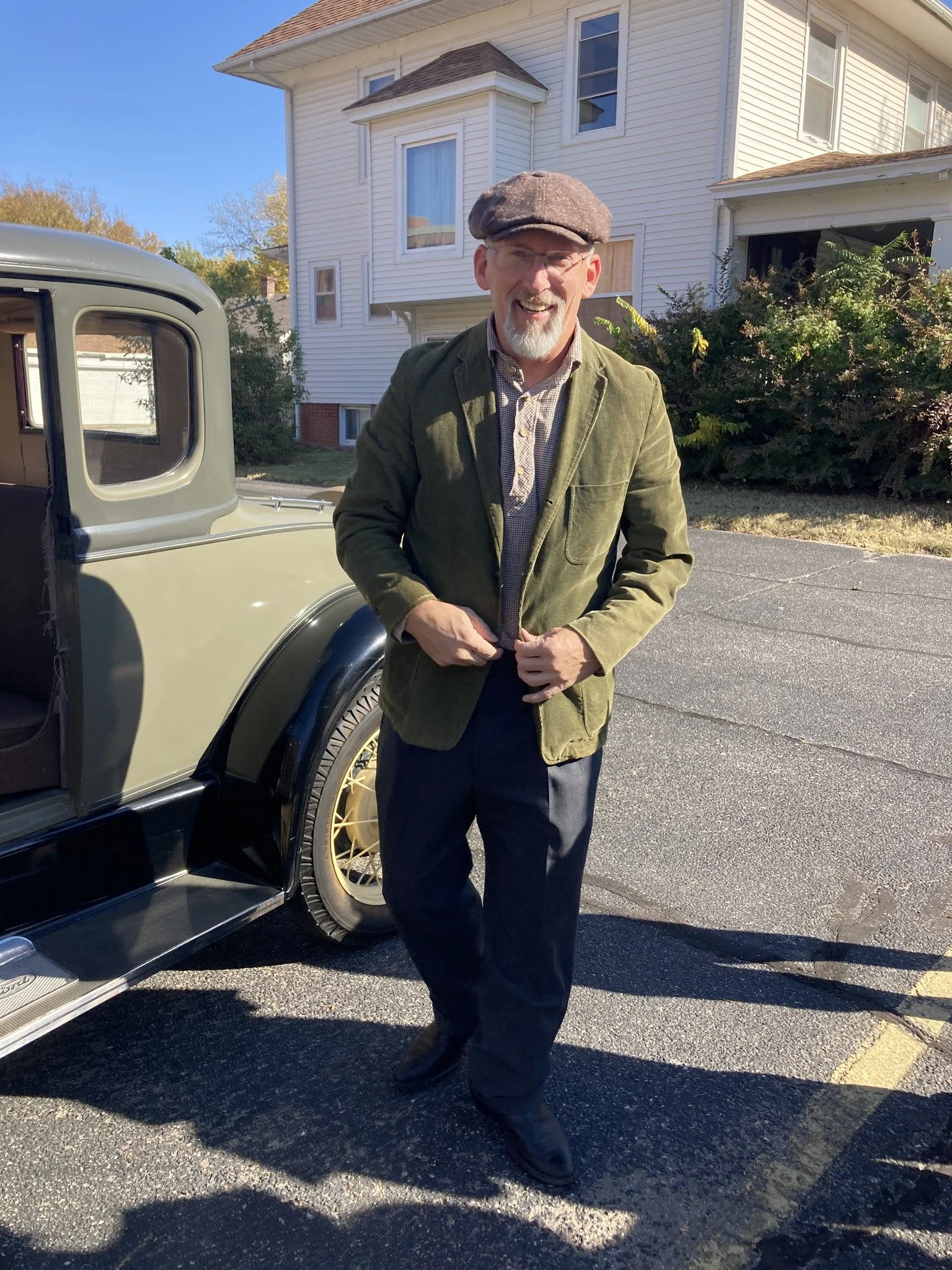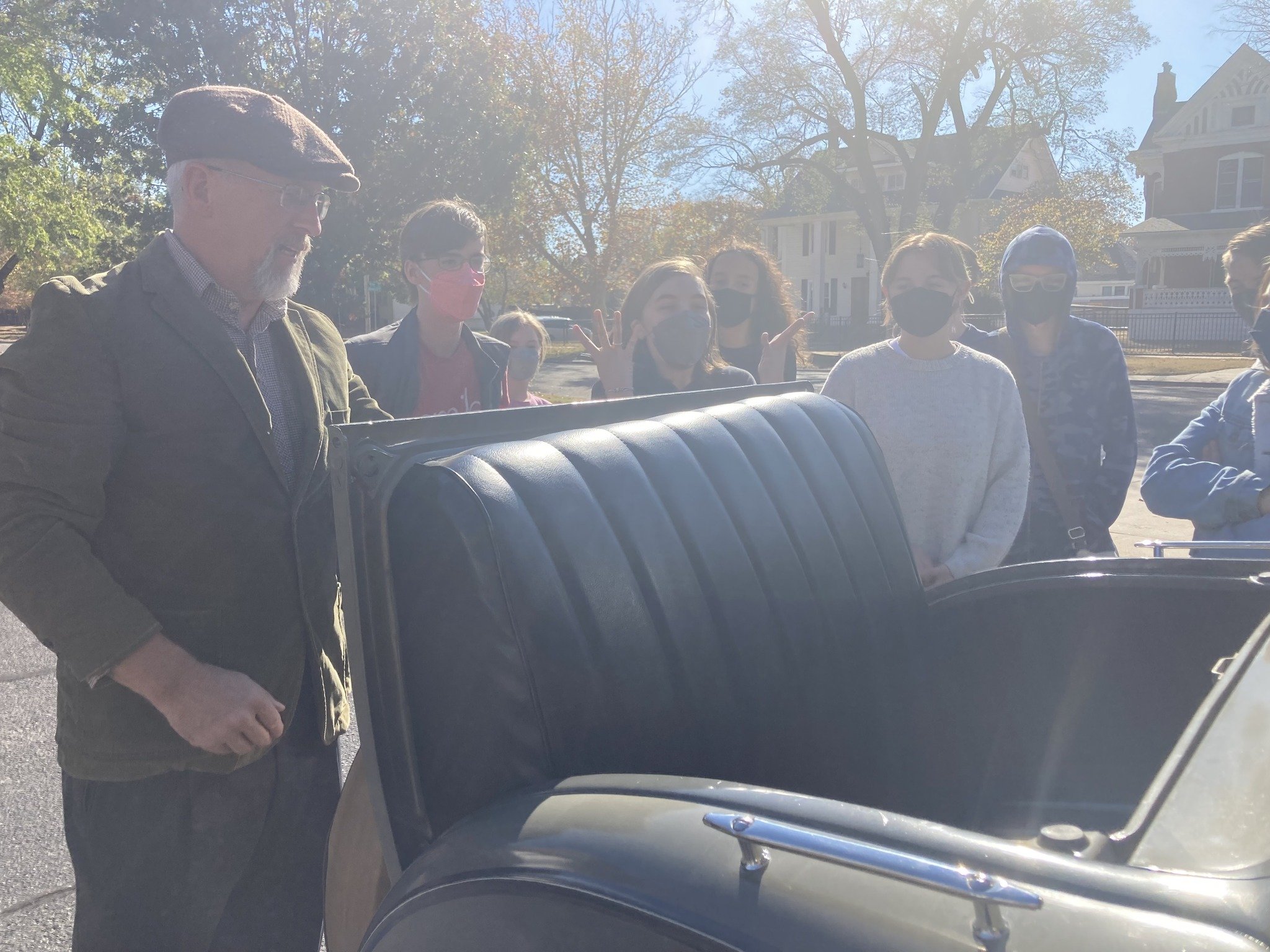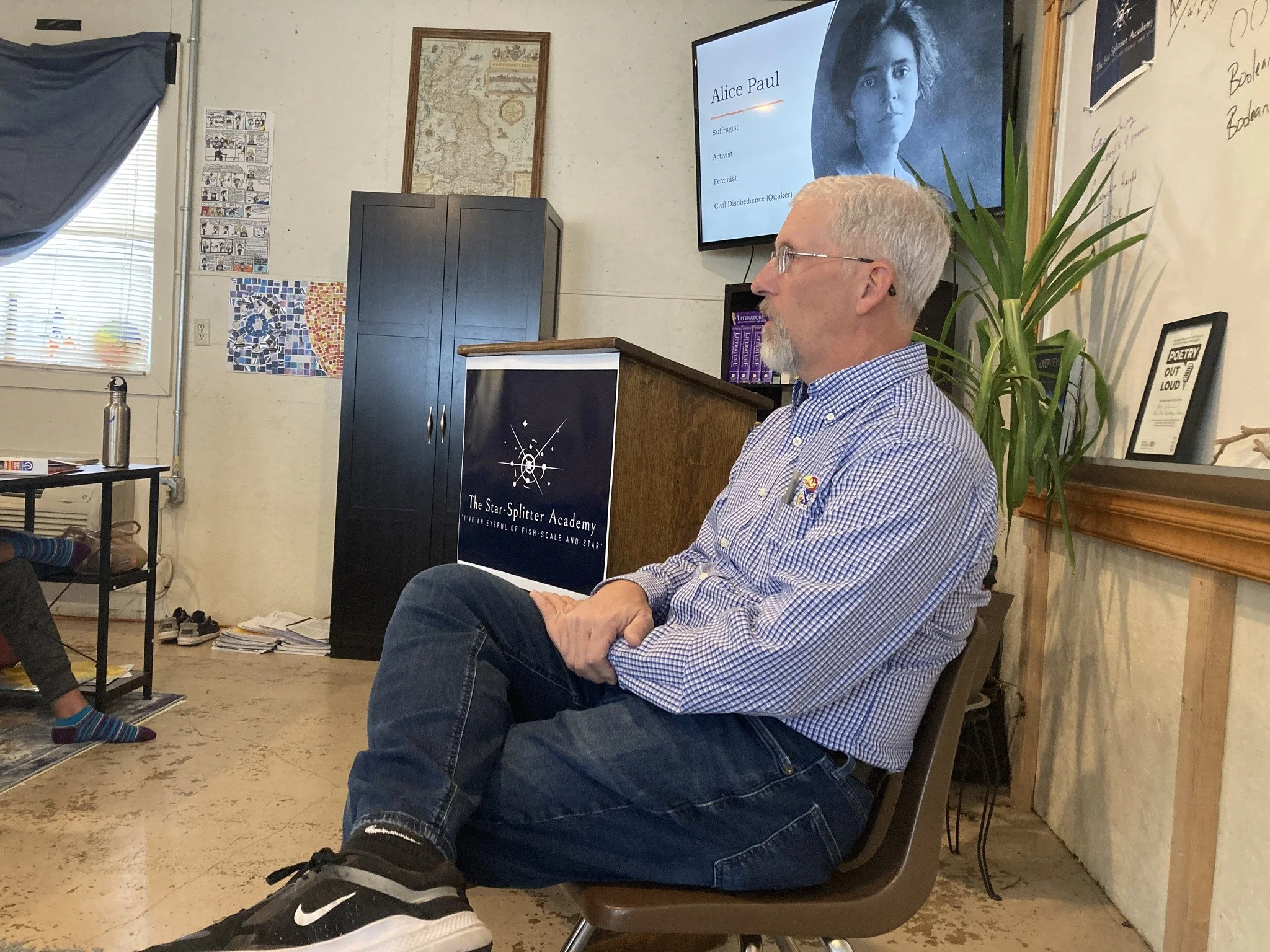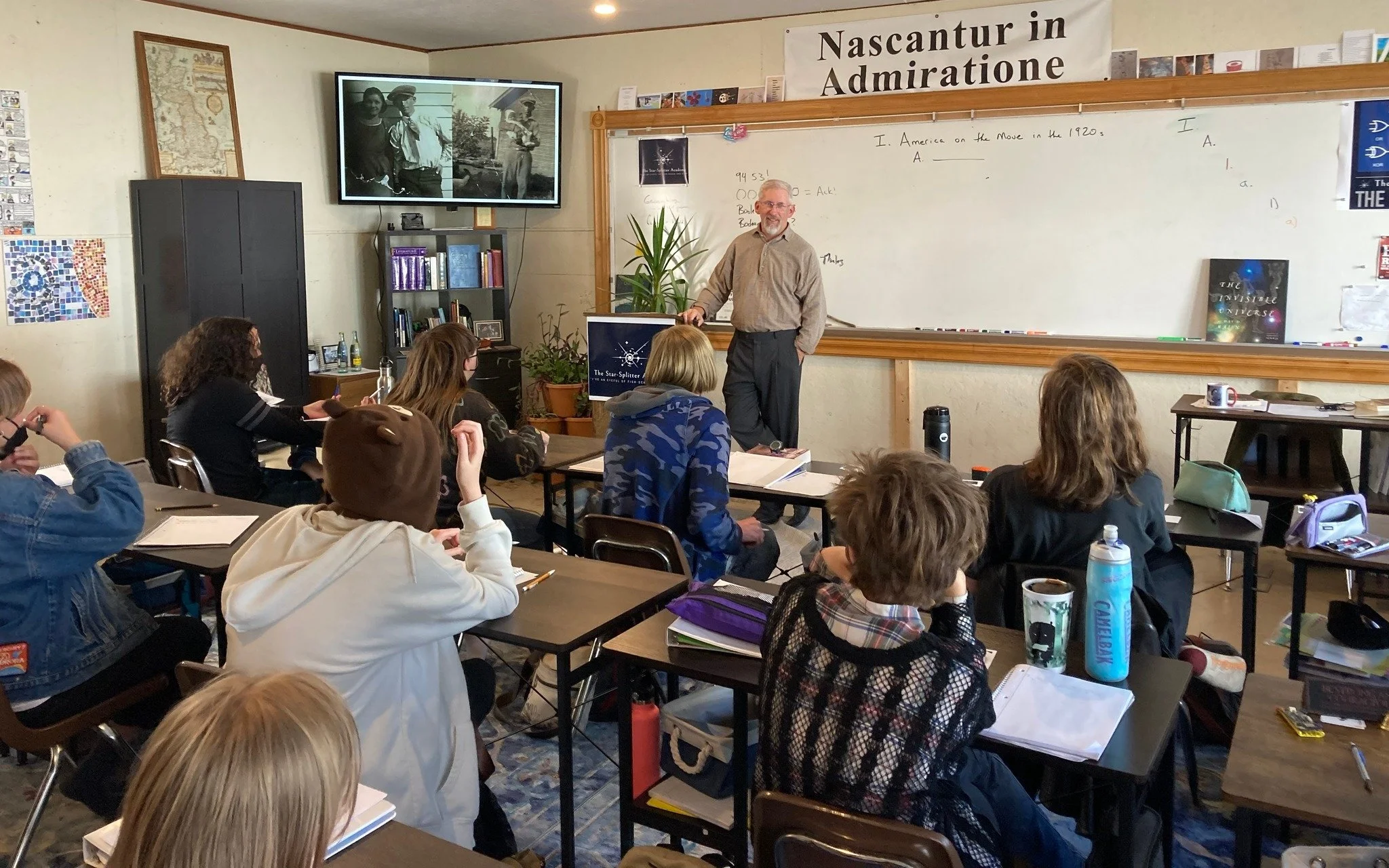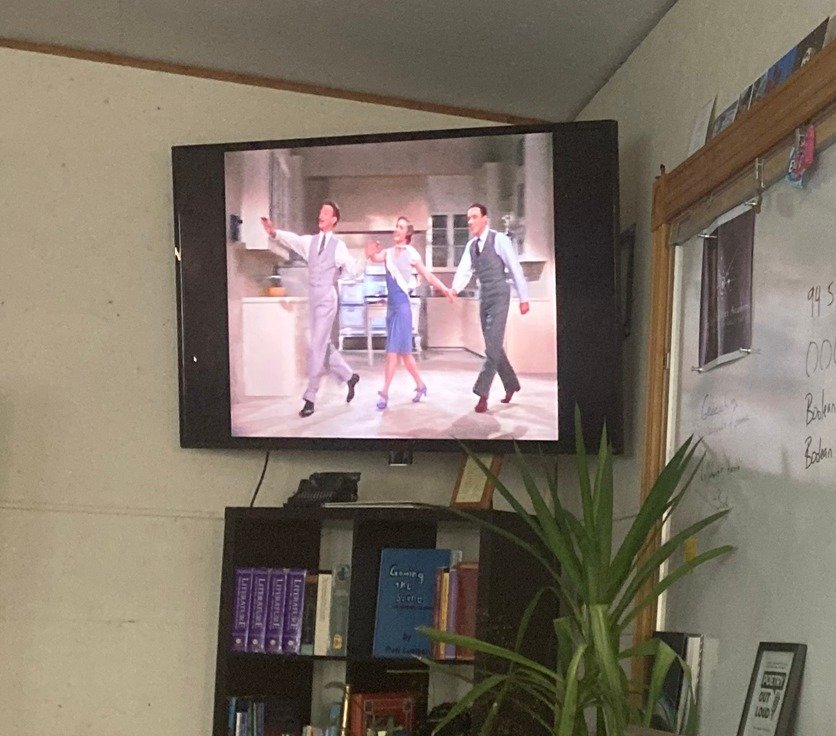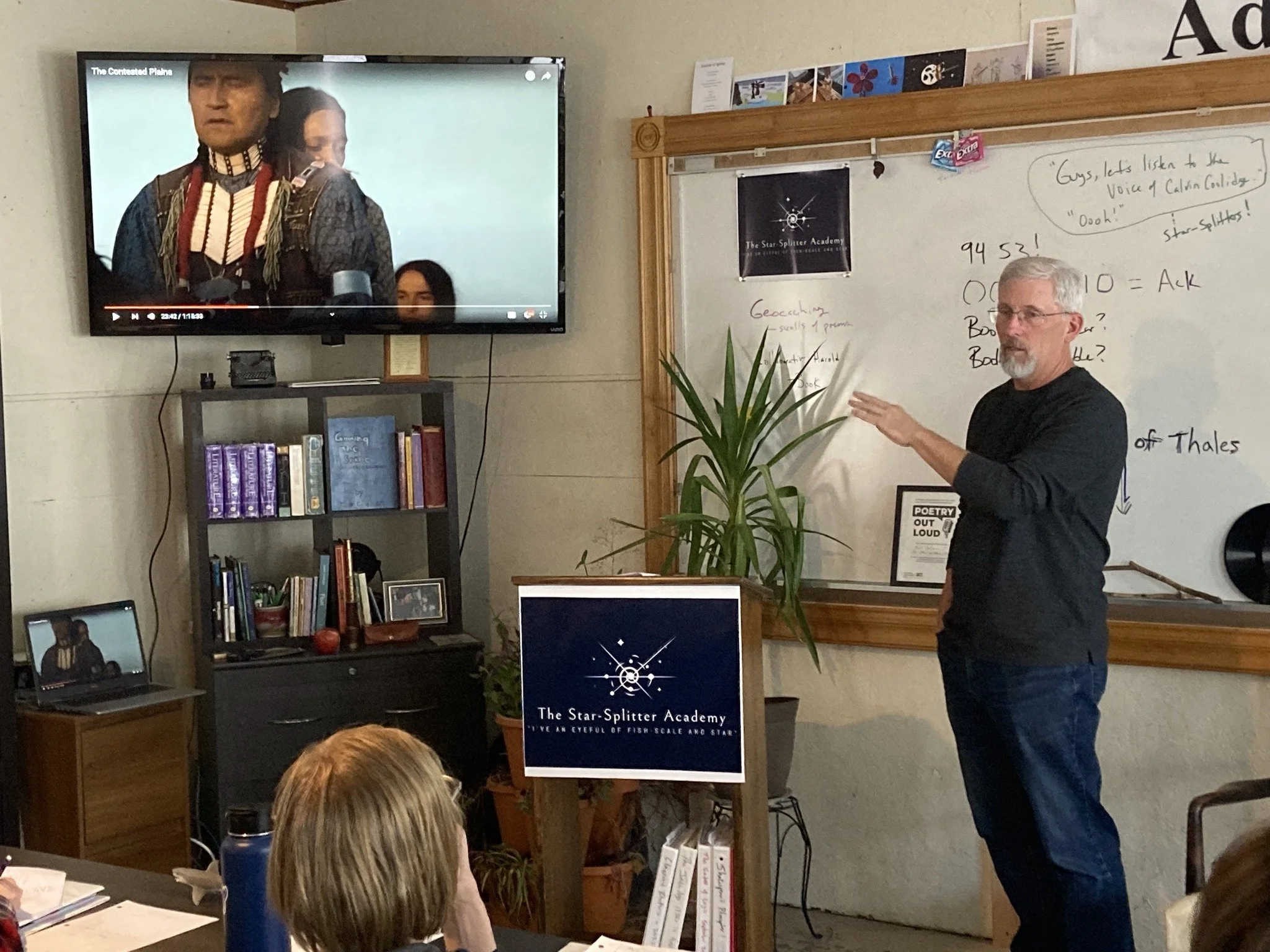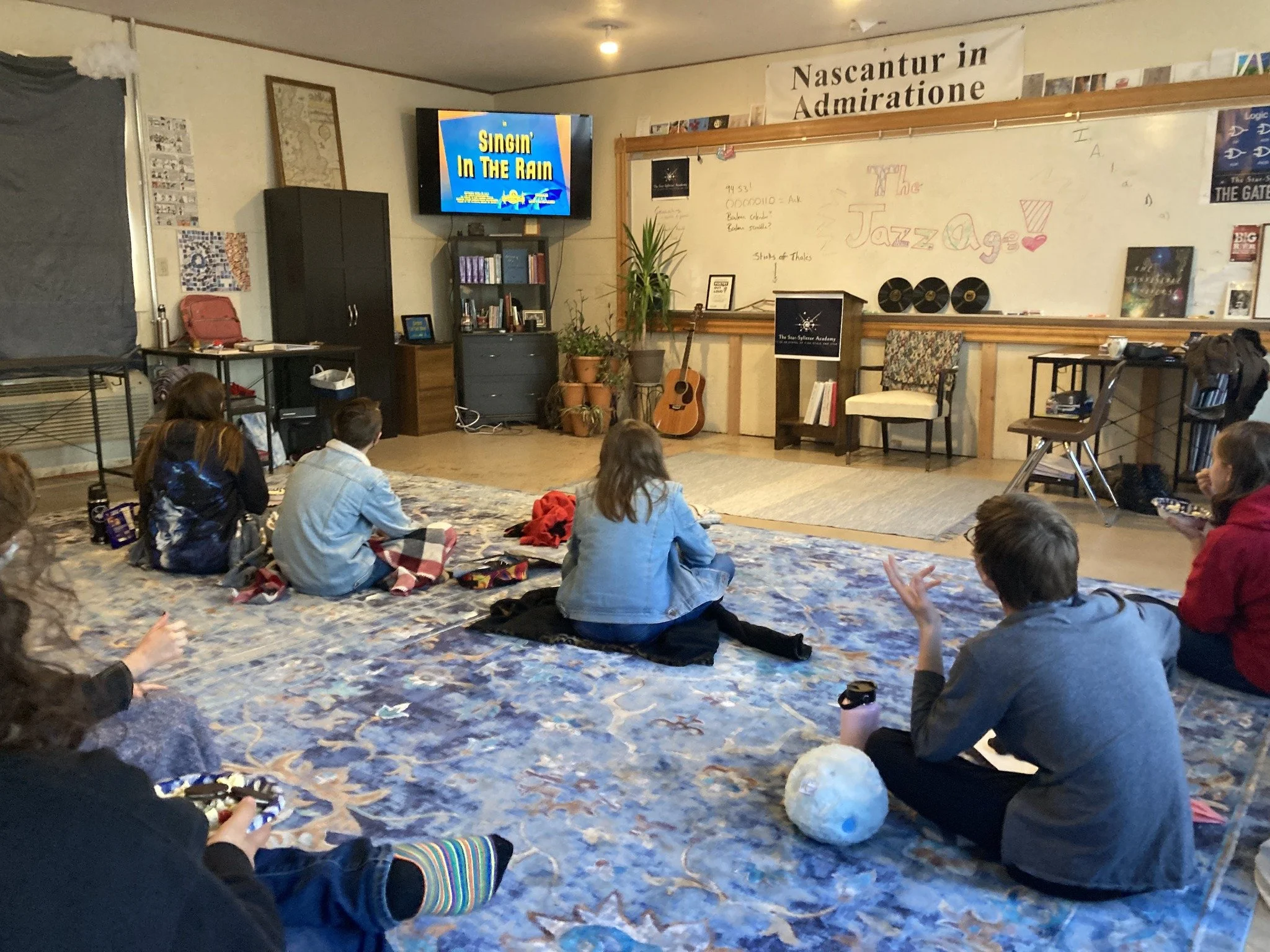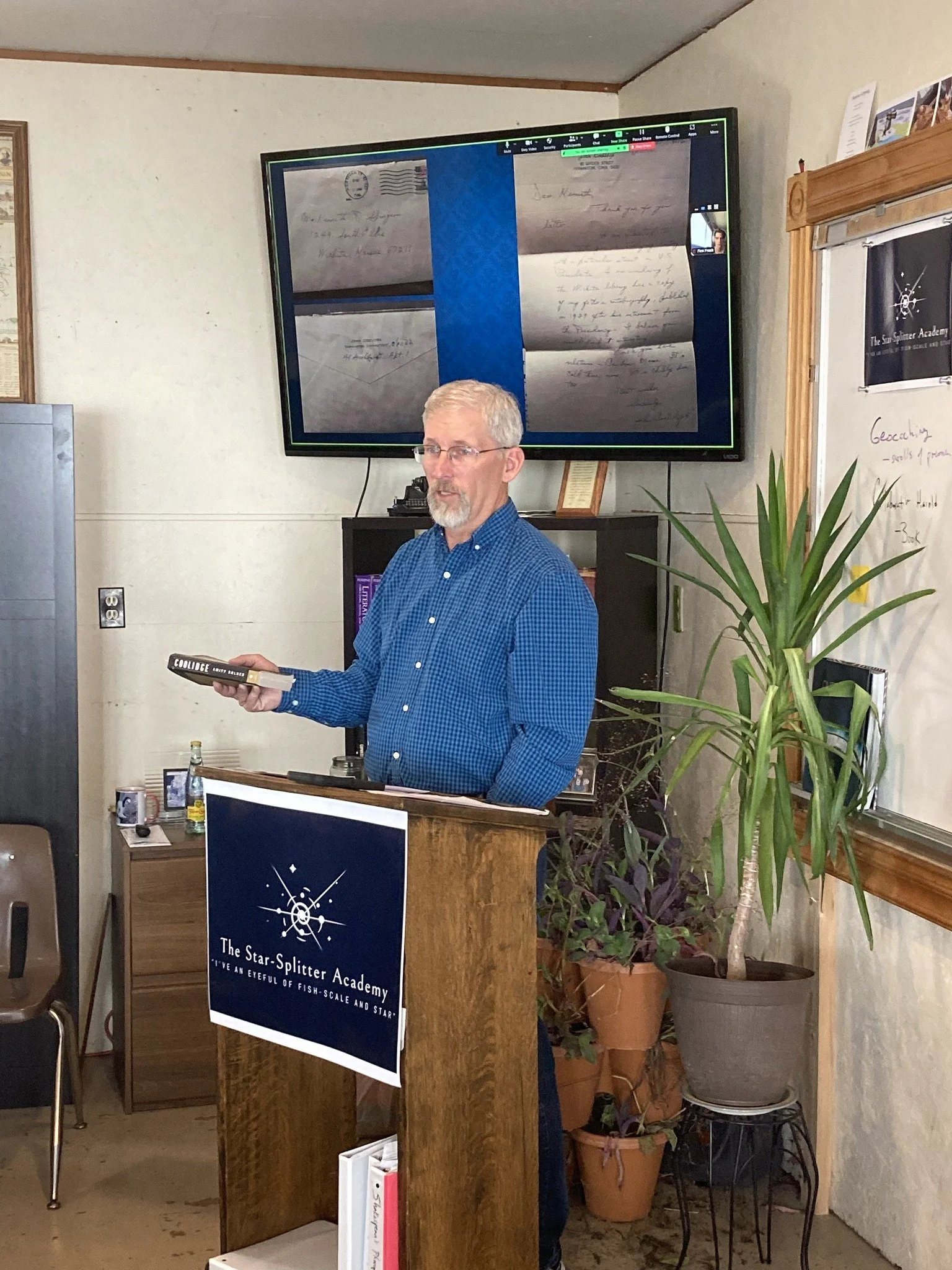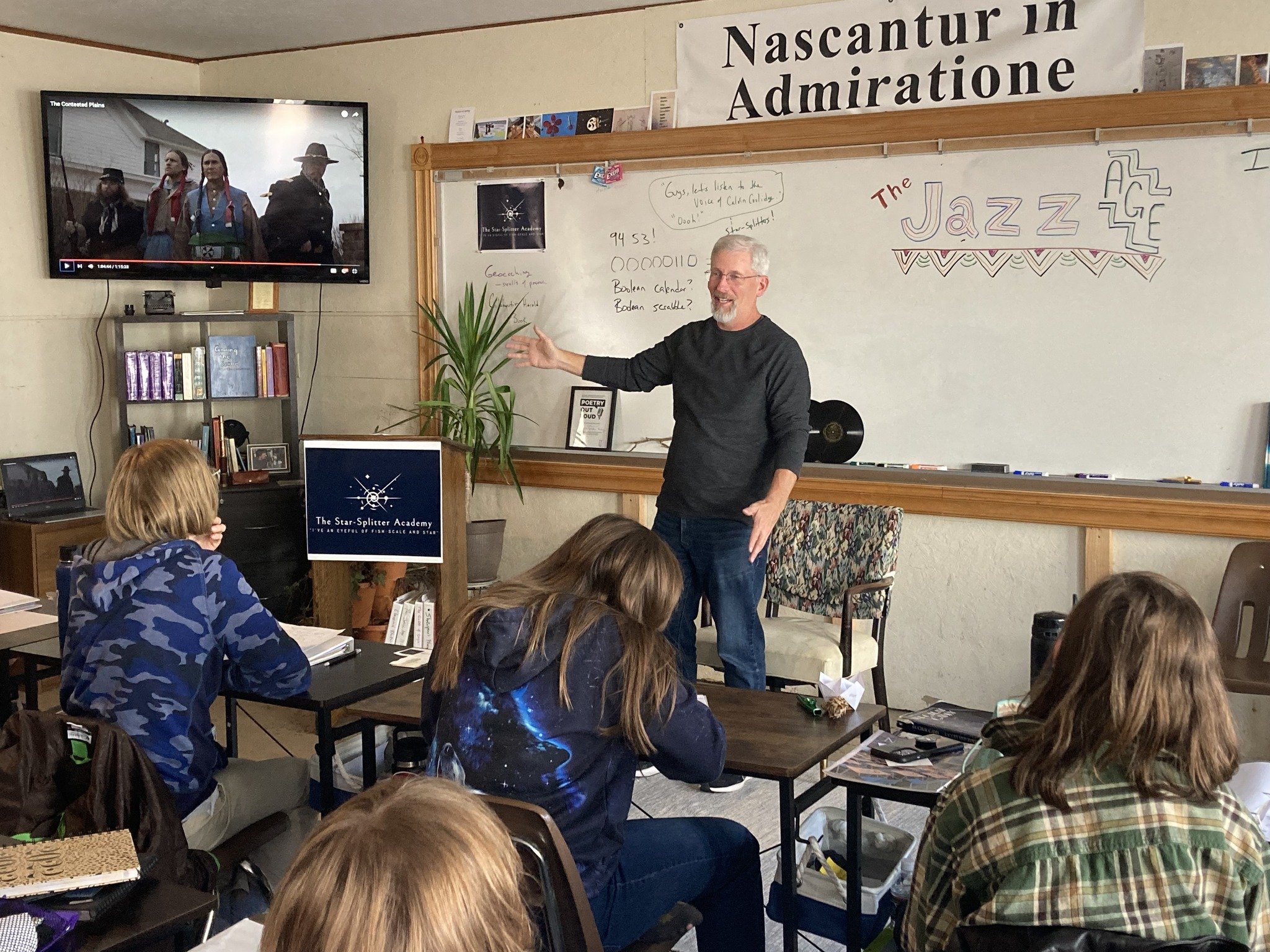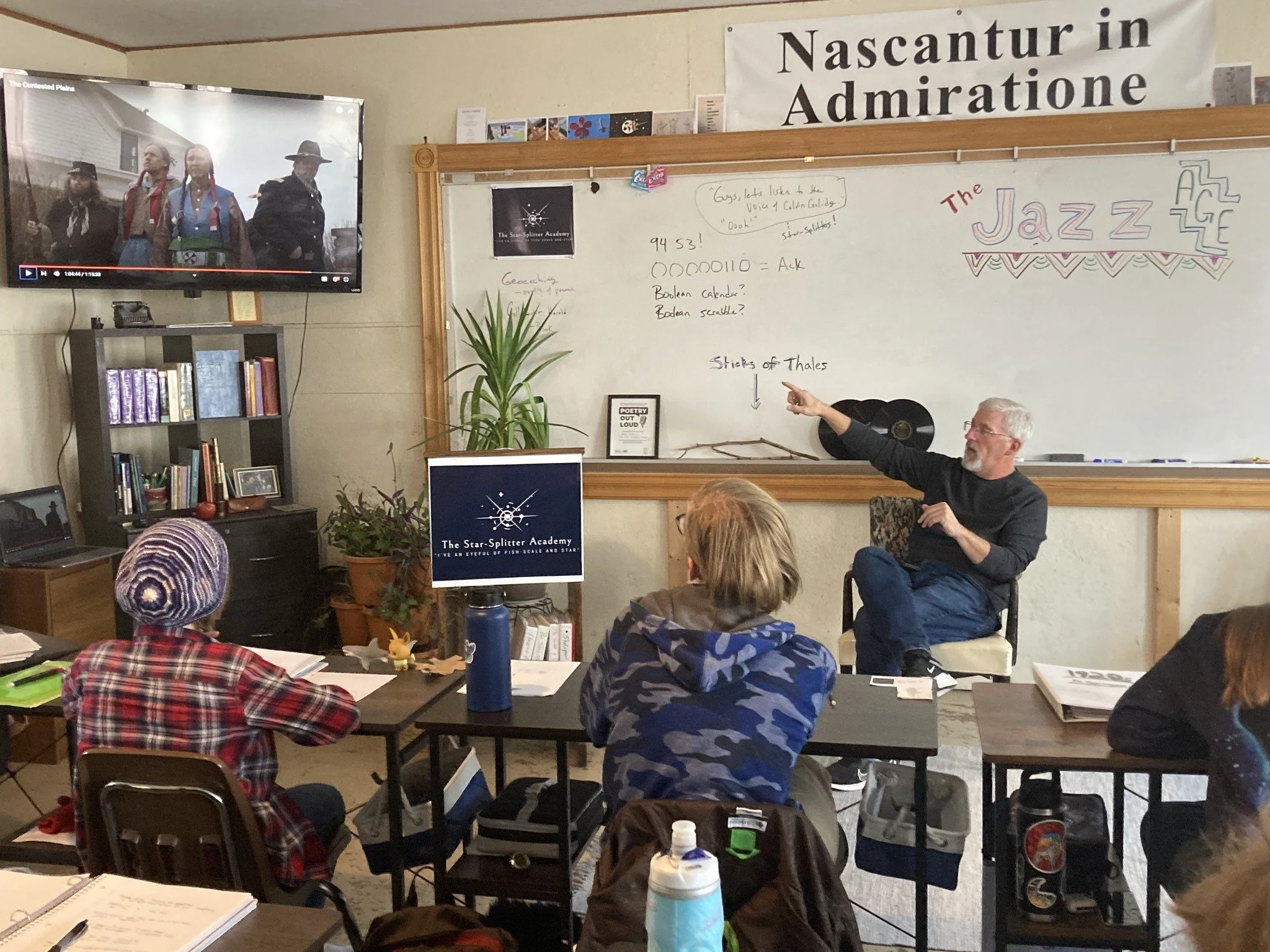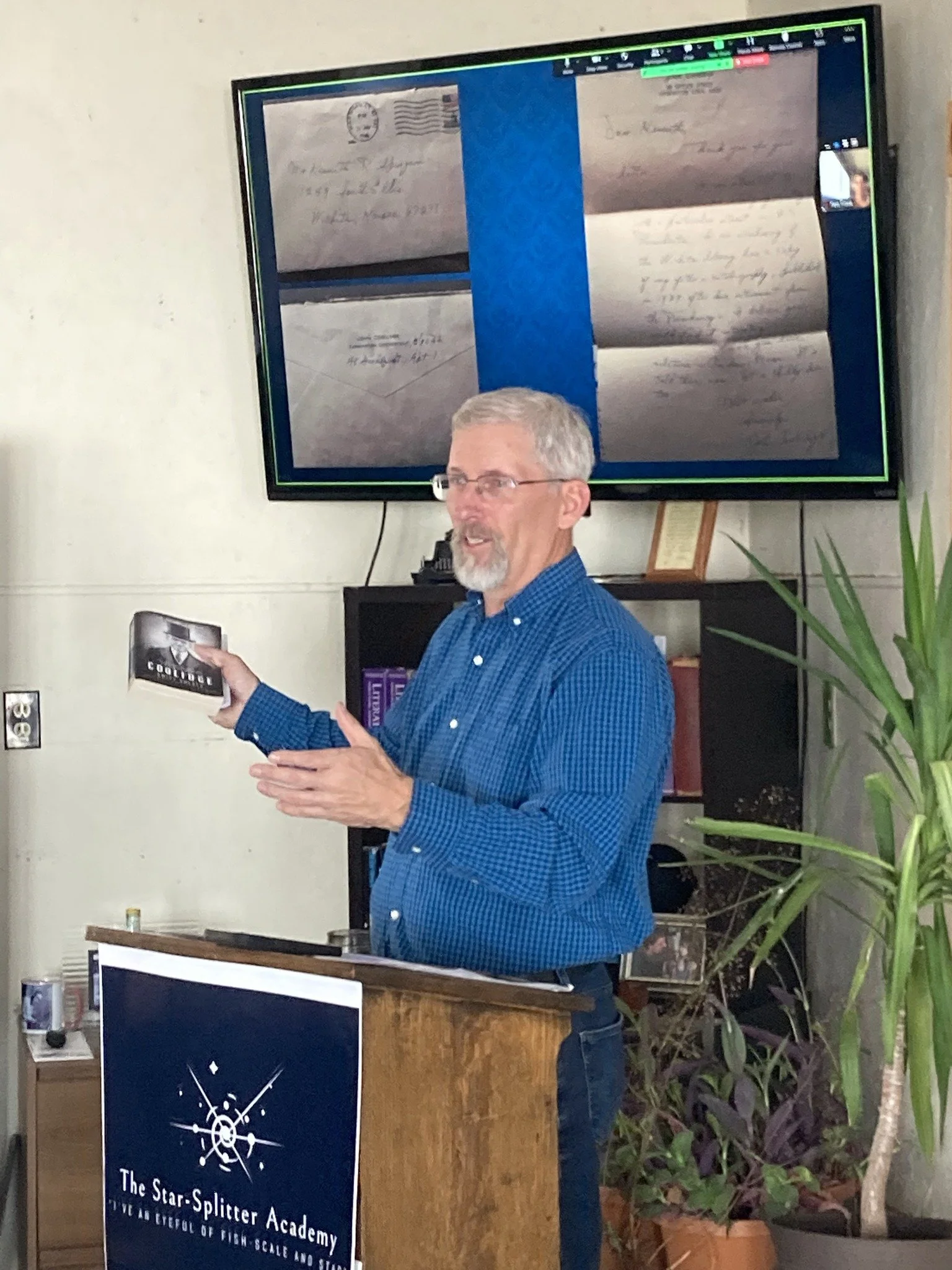The Jazz Age: U.S. History in the 1920s
This deep-dive, co-taught by award-winning teacher and filmmaker Ken Spurgeon, began with Ken's dramatic arrival on University Ave. in his Model A Ford, and ended with a guided tour of the Wichita Orpheum theatre, which first opened its doors in 1922.
Students learned about the 1920s (and what led up to the events of that decade) from a range of angles of vision, including oil exploration, the rise of the automobile, aviation (including Clyde Cessna, Amelia Earhart, and Charles Lindbergh), labor disputes and laws, women's rights and suffrage, temperance and prohibition, mass communication (print, recording, and radio--including a demo of the 1923 Brunswick Victrola that belonged to Mr. Spurgeon's great-aunt Hazel, featuring Jimmie Rogers's 1928 hit, "I'm Lonesome and Blue"), film (inventors, performers, and producers, including Chaplin, Harold Lloyd, and The Marx Brothers), politics and economics (including WWI, Harding, Coolidge, Hoover, the Teapot-Dome scandal, the economic boom and the stock market crash), sports and celebrity (Babe Ruth and Lou Gehrig, Jack Dempsey, Helen Wills), the origins and rise of jazz music, flappers, 1920s slang, key poems by William Carlos Williams, and the writers, artists, and thinkers that composed the Harlem Renaissance.
Because Star-Splitters learn from master makers in their fields, they learn not only the subject matters at hand but also the qualities, characteristics, habits of mind, and humanity of liberal artists who endeavor to make of their questions things of lasting value.
During this deep-dive, for example, even as the Star-Splitters were learning about the 1920s from Mr. Spurgeon, they were also learning what makes him a great teacher, filmmaker, historian, and person.
After learning about the long journey toward the nineteenth amendment, including the suffragists who were fearless in their pursuit of women's rights, we had an informal conversation with Mr. Spurgeon, in which we learned about the roots of his passion for history, about his mother and grandmother, women who modeled curiosity and storytelling, gifts he has cultivated as a teacher, writer, and filmmaker.
On another such occasion, Ken shared with the students a story from when he was not much older than some of them. Tasked with writing a history paper on Calvin Coolidge, he decided to write to the former president's only remaining child, John Coolidge. (He found the Connecticut address by combing through directories in the public library.) Coolidge immediately wrote back to the young Ken Spurgeon and proceeded to shed new light upon his father's decision-making as president. "I needed to find what had never been found," Mr. Spurgeon told us.
In another instance of these informal conversations, Mr. Spurgeon shared with our students the story of his own education, from when he was their ages to his life now as a historian and teacher whose fascination with storytelling, disciplined curiosity, and rich imagination--all cultivated when he was a young person--have led him toward the craft of filmmaking, both as a screenwriter and as a director.
Ken's films dramatize inflection points in Kansas history, from the Bloody Kansas border-war that prefigured the Civil War (The Road to Valhalla) to The Lawrence Massacre of 1863 (Bloody Dawn) to the moment our state's world-known anthem was first set down in wax ("Home on the Range").
Mr. Spurgeon then shared scenes from his latest historical drama, Contested Plains, set in 1874-1875, illustrating the levels of research, attention to detail, creativity, and collaboration that are required to ensure that each detail of dress and speech and set and prop are as authentic as possible, even as they help compose the overall emotional and intellectual story that the drama is telling.
He shared technical knowledge; he told stories; he gave honest and compassionate advice; he answered every question. He inspired us to make our learning a way of life.
"Learning doesn't happen in a day," he told us. "It's a lifestyle."
Throughout this deep dive, we cultivated this lifestyle of learning--of daily, disciplined curiosity--in part by emphasizing the daily work of outlining. Central to a Star-Splitter education is clarity of thought and expression. We regularly engage in the practice of outlining, including outlining speakers' lectures, so that we can see the cognitive maps that clear thinkers follow when communicating ideas.
Instead of allowing education to become a passive activity, we exercise the practice of interacting with what's before us by seeing how it fits into meaningful patterns and shapes, ones that hold their form over time: students can fruitfully return to these outlines in the future.
In this way, we start to see that their learning is durable. This daily organizational work allows students to better retain what they've learned and thus allows them to be better able to connect that learning to future discoveries, so that whatever students make of their learning--whatever craft or art to which they are called or drawn--will contain more depth and scope.
On Fridays, as always, we encountered art and literature that deepened our understanding of the weeks' learning. We read the opening of The Great Gatsby, for example--that classic encapsulation of so many of the forces at play in the 1920s. We also watched and then discussed the classic movie musical Singin' in the Rain, set during the transition from silent films to talkies in the 1920s, which we had studied earlier that week. And, on our final Friday of class, thanks to Jen White, we were given a guided tour of the Wichita Orpheum Theatre, a historic venue currently celebrating its centennial, having first opened its doors to vaudevillians such as Harry Houdini in September 1922.
And, as always, we Woke to Wonder with speakers and presentations that added further dimensions to our deep-dive. For example, when studying how movie theatres in the silent-movie era had pianists who played the film's score live (sometimes even improvising that music), we were joined live by Justin Meyer, who recently earned his Masters in Music Film Composition from the Pacific Northwest Film Institute in Seattle, WA. Justin spoke about the art of scoring film, and then shared some of his own work with us, including one of his pieces that will be part of the soundtrack of a movie on Lifetime later this year.
Aah-OOH-gah! Mr. Spurgeon motors into the 1920s!
On the first day of November in 2023, we roared into the 1920s with the arrival of Mr. Spurgeon dressed in his glad rags behind the wheel of his his Model A Ford. For the next three weeks, the Star-Splitters dove deep into the Age of Play, the Jazz Age, the Roaring 20s, with expert collaborator Ken Spurgeon, an award-winning historian, author, and filmmaker. We thought it was the cat’s pajamas!
On the first day of November in 2023, we roared into the 1920's with the arrival of Mr. Spurgeon dressed in his glad rags behind the wheel of his his Model A Ford. For the next three weeks, the Star-Splitters dove deep into the Age of Play, the Jazz Age, the Roaring 20s, with expert collaborator Ken Spurgeon, an award-winning historian, author, and filmmaker. We thought it was the cat’s pajamas!
Victrola
As part of our deep-dive into the Jazz Age, Mr. Spurgeon shared with the Star-Splitters the 1923 Brunswick Victrola that belonged to his great-aunt Hazel. (Featuring Jimmie Rogers's 1928 hit, "I'm Lonesome and Blue")
